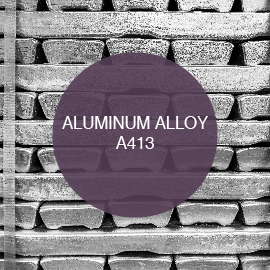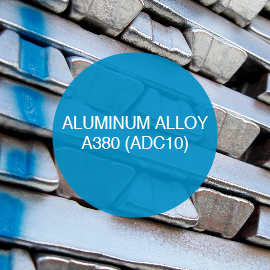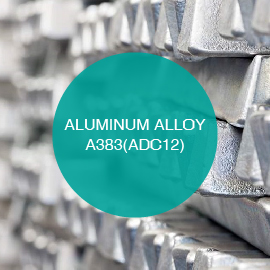ALUMINUM ALLOY AlSi10Mg
The Aluminum alloy AlSi10Mg is commonly used because of its low density and high strength-to-weight ratio. Its properties can be improved with the application of various heat treatments, which can, for instance, improve conductivity and ductility. Here we have discussed its basic material properties and some of its unique characteristics.

AlSi10Mg Characteristics
The density of AlSi10Mg is approximately 2.67 g/cm3, and it is an aluminum-based alloy that can be hardened. Components created using solid-state manufacturing (SLM) processing from aluminum-based alloys have a uniform texture that is almost completely porous.
Moreover, the mechanical characteristic values of these components fall within the range that is specified for that material. Through further processing, such as heat treatment, the component’s properties can be altered to better suit the specific requirements of the application.
Because of how quickly SLM components solidify, the typical heat treatment process for AlSi10Mg is not required for components made using this manufacturing method. As a result, following the SLM procedure, the only recommended duration for the heat treatment is two hours, and the temperature should be 300 degrees Celsius.
Advantages
- High-quality dynamic features.
- Highly durable and tenacious.
- Excellent processability.
- Exceptional electrical and thermal conductivity.
- Durable against rust.
- Superior tensile and shear strength for dynamic loads.
- Heat treatments allow for the tailoring of material properties.
Applications
AlSi10Mg is a material that is in high demand for industrial applications because of its good electrical conductivity and its resistance to corrosion in harsh conditions. Because it is possible to achieve high strength while maintaining dynamic load capacity, it is excellent for application in components that are subjected to high levels of stress. As a result of these factors, AlSi10Mg is currently the aluminum alloy that sees the most widespread application.
It is possible to utilize it to create components with complex geometries, prototypes at a low cost, and parts with thin walls. Components made of AlSi10Mg have found broad use in a variety of industries, including the automotive and aerospace industries, amongst others. In addition to being used to create components such as gas-tight parts and structural elements like brackets, aluminum AlSi10Mg can also be used to make components such as brake calipers and heat sinks.
Mechanical Properties
| Contents | Value |
| Brinell Hardness | 80 HB |
| Ultimate Tensile Strength | 240 MPa |
| Yield Strength | 297 MPa |
| Fatigue Strength | 110 MPa |
| Elongation | 9 ± 2 % |
| Modulus of Elasticity | 75 ± 5 GPa |
Physical Properties
| Contents | Value |
| Electrical Conductivity | 25.0 % IACS |
| Thermal Conductivity | 130 – 150 W/mK |
| Melting Point (average) | 570 ℃ |
| Coefficient of Thermal Expansion | 20 µm/m°K |
| Specific Heat Capacity | 0.73 J/kg°C |
| Density | 2.67 g/cm³ |
Alloy Composition
| Contents | Value |
| Aluminum (Al) | Balanced |
| Zinc (Zn) | 0.10 % |
| Silicon (Si) | 10 % |
| Magnesium (Mg) | 0.2 – 0.45 % |
| Titanium (Ti) | 0.15 % |
| Lead (Pb) | 0.05 % |
| Tin (Sn) | 0.05 % |
| Copper (Cu) | 0.05 % |
| Manganese (Mn) | 0.45 % |
| Nickel (Ni) | 0.05 % |
| Iron (Fe) | 0.55 % |
| Other | 0.15 % |
If you are looking to diecast using AlSi10Mg or other special alloys, you can send an inquiry to our sales team. We usually reply within 24 hours.





